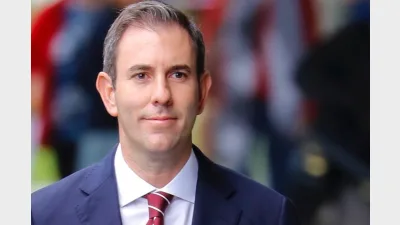Retirement Income Covenant: What are funds doing differently?



With the Retirement Income Covenant in effect, Super Review has reached out to the largest superannuation funds to see how they are implementing their strategy.
The strategies employed by funds were diverse with an intention to evolve over time, focusing on such things as expanding advice capability and launching longevity products.
AustralianSuper
Starting with Australia’s largest superannuation fund, AustralianSuper, whose strategy is based on three objectives: maximising members’ retirement income, providing flexible access to funds in retirement and managing expected risks.
AustralianSuper group executive, Shawn Blackmore, said: “AustralianSuper delivers strong long-term returns and provides help and guidance to support members throughout their working life and into retirement. We know that members have a broad range of needs and account balances spanning across the over 50 membership base and it will be vital to differentiate the strategy to meet these varying needs.
“We will be assessing, developing and evolving the strategy and associated action plan to suit the changing needs of members.”
Australian Retirement Trust
Speaking to Super Review, Australian Retirement Trust (ART) said it would leverage the advantages of scale, data and combined investment capabilities to benefit its members and improve their retirement outcomes, including through its existing longevity product, Lifetime Pension.
ART chief strategy officer, Teifi Whatley, said: “We aim to build on our current product suite to provide products that will help members with varying needs and financial positions to maximise retirement income, maintain access to capital and manage the key risks to income in retirement”.
Aware Super
Aware Super’s retirement strategy developed in response to the RIC had three key pillars – developing innovative retirement solutions, providing affordable, readily accessible help, and delivering simple, personalised experience.
Head of retirement, Jacki Ellis, said: “We’ll continue to evolve our products and support tools to help our members optimise their age pension, draw down a higher income in retirement and feel confident they will have an income for the rest of their life. Helping members achieve an outcome that takes account of their specific circumstances is key to our approach”.
AMP
Meanwhile, AMP’s strategy would combine education, advice and low-cost lifetime income products, set to be launched later in the year, complementing its existing suite of retirement products.
Ben Hillier, AMP’s general manager retirement solutions, said: “We’ll draw on our breadth of expertise across wealth management to provide tailored retirement solutions, firmly aligning with our trustee’s purpose to provide the best possible outcomes for members.”
Unisuper
Unisuper said its RIC strategy focused on providing real guidance and professional advice to empower its members at every stage, from saving during working life to spending in retirement.
“UniSuper said contemplating members’ retirement outcomes is not new to us- we have a deep expertise in this space, with member outcomes at the heart of what we do,” it said.
“Our award-winning in-house advice team and full suite of retirement products set us apart from others, making UniSuper a natural choice for members building retirements worth saving for, that don’t cost the Earth.”
HESTA
HESTA said its RIC strategy was designed to address the specific needs of its membership, 80% of whom were women.
HESTA chief advice officer, Josh Parisotto, said: “Like many Australians, many of our members will use their super to supplement the income they will receive from the age pension, and this is reflected in our strategy. For too long the conversation has focused on the need to have $1 million in super, which can be very disempowering to many people, especially those on low incomes.”
A unique feature of its strategy was the HESTA Income Stream, a strategy that combined conservative and balanced growth options to de-risk a member’s portfolio as they aged.
“Income payments are first drawn from the higher-risk option before switching to the more conservative option. This means exposure to growth-oriented assets like infrastructure and shares is expected to decline slowly over time. HESTA Income Stream provides flexibility, with members able to vary income drawdown amounts and withdraw lump-sum amounts in addition to regular income payments.”
Insignia Financial (owners of MLC and formerly IOOF)
Insignia said its strategy was designed to assist members to achieve and balance three key objectives: maximising retirement income, managing risks in retirement and having flexible access to savings.
Sam Wall, general manager, master trust and insurance products at Insignia Financial, said: “The Trustee has segmented the fund’s membership into groups to provide more targeted support to assist members in evaluating their needs as they approach or are in retirement.
“This includes helping them to understand their potential income sources in retirement based on their current financial position and any age pension entitlements. Our superannuation fund members can also evaluate their financial and non-financial requirements through education (eg online content, webinars and podcasts) and the use of digital tools and calculators.”
Colonial First State
CFS said it had analysed its members’ needs across different segments, including age, gender, in accumulation and retirement phases, account and product type to better understand its members and the opportunities it had to enhance its products or services.
CFS superannuation chief executive, Kelly Power, said: “Planning for retirement is complex and that’s why, as well as providing better guidance and member education, we are strong advocates of quality financial advice. It’s also why it’s imperative that the Quality of Advice review addresses the declining availability and affordability of financial advice.
“We have seen how many CFS customers have worked closely with their advisers over time and we support them and their advisers with leading products and services to ensure these members are becoming ready for their next stage of life.
“Our focus now and in the future is to offer members choice from a wide range of well-designed and competitive products and services that can be combined in different ways to cater for the majority of individual circumstances.”
Recommended for you
The major changes to the proposed $3 million super tax legislation have been welcomed across the superannuation industry.
In holding the cash rate steady in September, the RBA has judged that policy remains restrictive even as housing and credit growth gather pace.
A new report warns super funds must rethink retirement readiness as older Australians use super savings to pay off housing debt.
An Australian superannuation delegation will visit the UK this month to explore investment opportunities and support local economic growth, job creation, and long-term investment.









